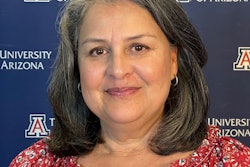Latino college students who have the support of their families, start college planning by the eighth grade, take three or more years of mathematics, and start at a four-year institution are more likely to finish college, according to a new report that suggests these attributes form a strategy for closing the college-completion gap between Latino and Whites.
The Educational Policy Institute’s study, “Latino Students and the Educational Pipeline,” was among the strategies educators, researchers, and policymakers discussed Wednesday at the institute’s national capital summit on Latino students and educational opportunity.
The problem: less than a quarter of Latino college students graduate with a four-year degree within 10 years of leaving high school – less than half the rate of White students.
“We have come a long way, but the mission to champion Hispanic success in higher education remains constant. The challenges go beyond success in higher education, we have to deal with public perception,” Antonio Flores, president of the Hispanic Association of College and Universities (HACU) told attendees.
HACU member institutions serve nearly 2 million Latino college students. To better serve these students and those to come, Flores is petitioning for a re-authorization of the Higher Education Act of 2005, which would provide more grant aid to the neediest students, by increasing the maximum Pell Grant and maintaining low fixed rates for the consolidation of loans. The College Cost Reduction Act recently signed by President Bush raises the maximum Pell Grant and provides additional funding to minority-serving institutions.
Marvin Titus, a professor of demographics in higher education at the University of Maryland, College Park, said that there were two keys to increasing minority enrollment and retention: academic preparation and economic investment.
“First there needs to be an increase in economic resources allocated to (high schools) educating minority students, and secondly there needs to be an increase in the amount of money allocated to students from low socio-economic backgrounds to afford them more access to a college education,” Titus said.
An increase in both there areas, said Marvin, would boost the number of academic preparatory programs for college-bound high school students and increase parents’ support and expectations in these schools.
“Studies show there is a direct correlation between parental support and college enrollment among students with a low socio-economic background. Particularly in high schools, where there is more parental support there are greater college enrollment numbers,” Titus said.
But according to EPI’s study, expecting their children to attend some college or to get a bachelor’s degree had no significant effect for Latinos, but parental expectation played a significant role in advanced degree attainment.
Margot Tyler, senior program officer for the Bill and Melinda Gates Foundation, suggested that the most necessary instrument in closing the achievement gap in higher education is access to great elementary and secondary education.
“Good public schools that offer rigorous instruction, relevant curriculum, and meaningful supportive relationships make the difference,” she said.
–Michelle J. Nealy
There are currently 0 comments on this story.
Click here to post a comment
© Copyright 2005 by DiverseEducation.com















